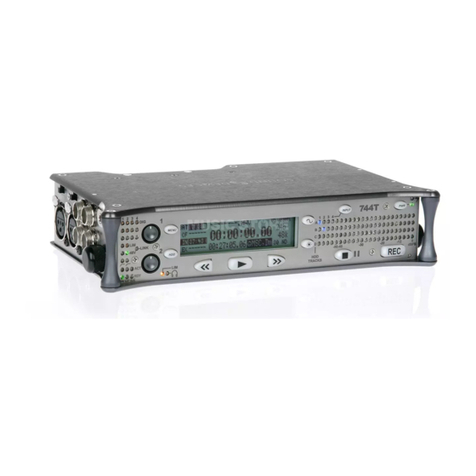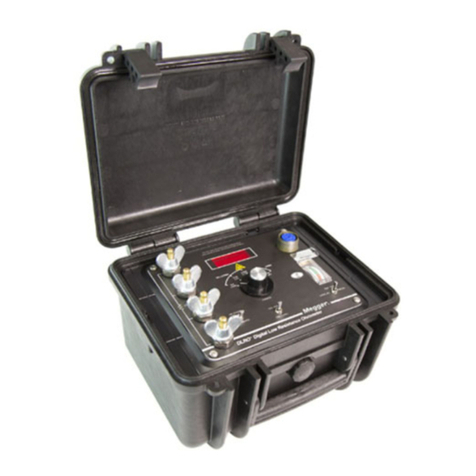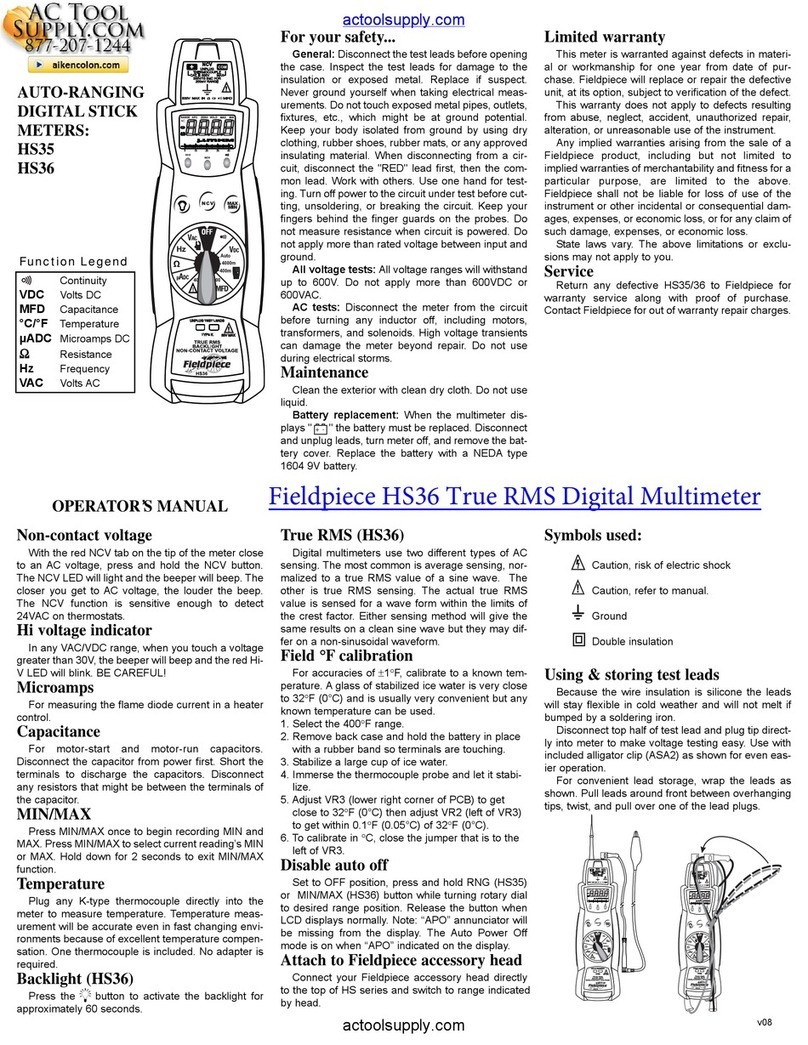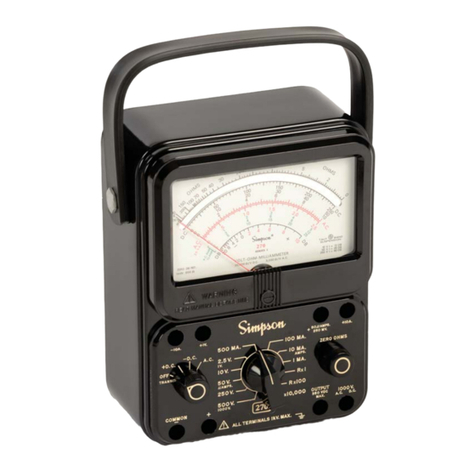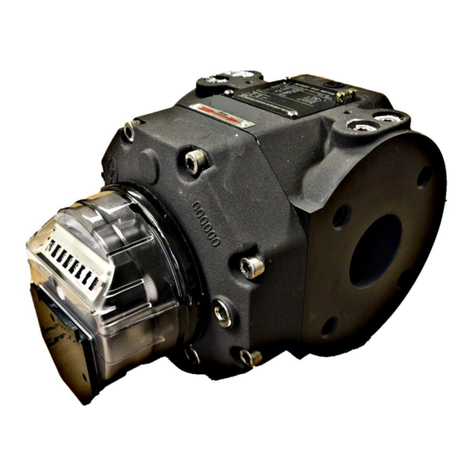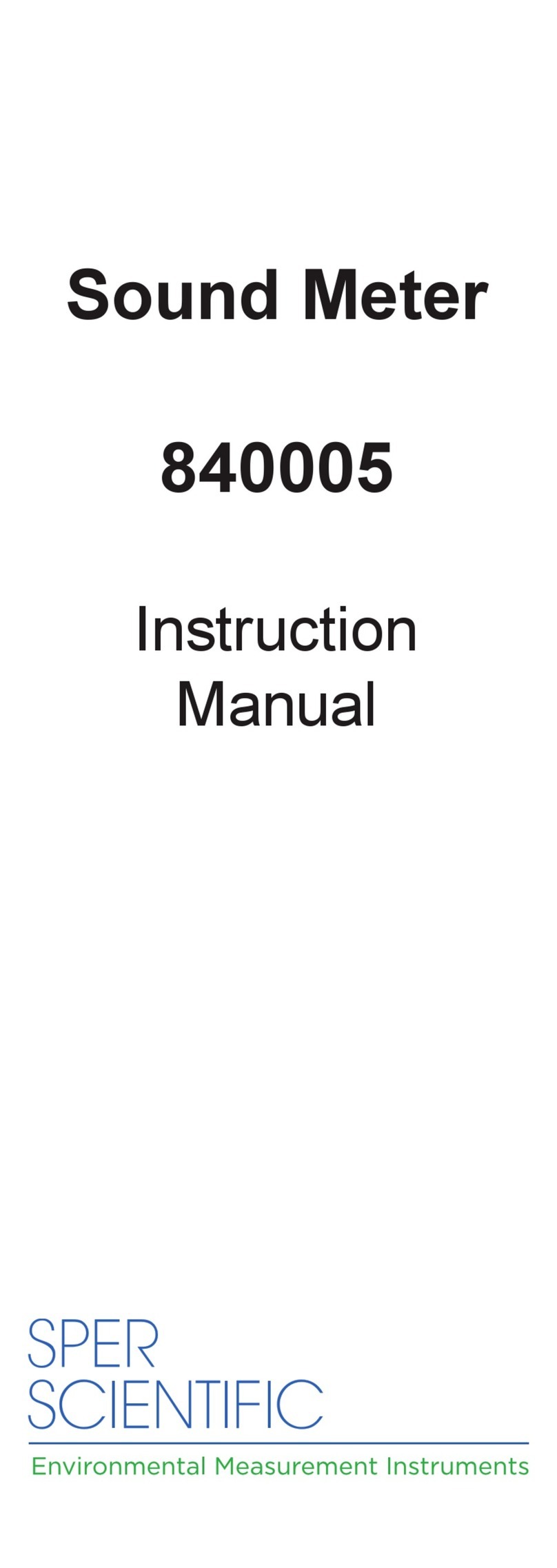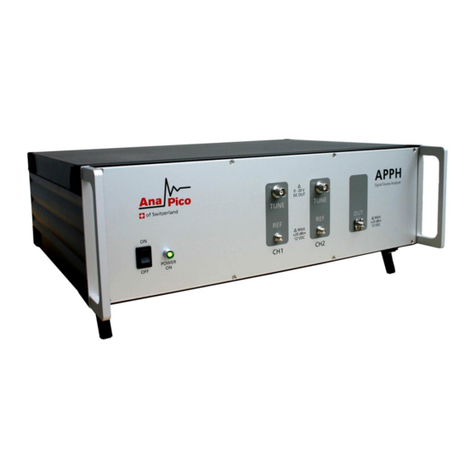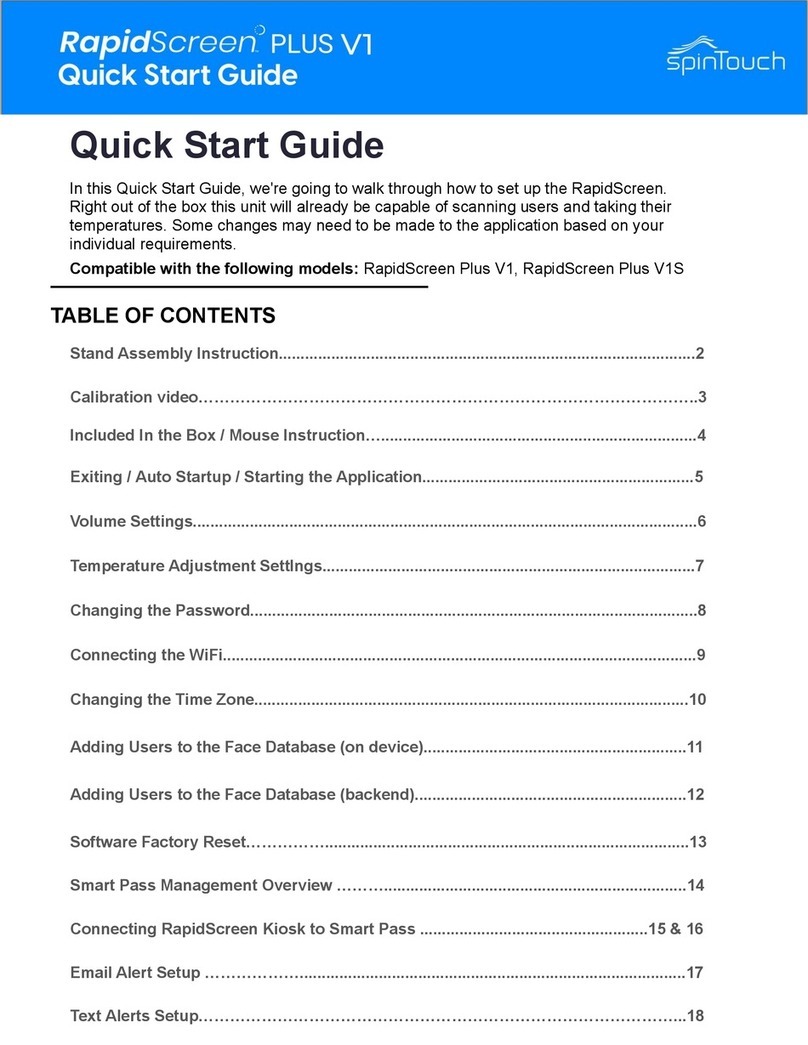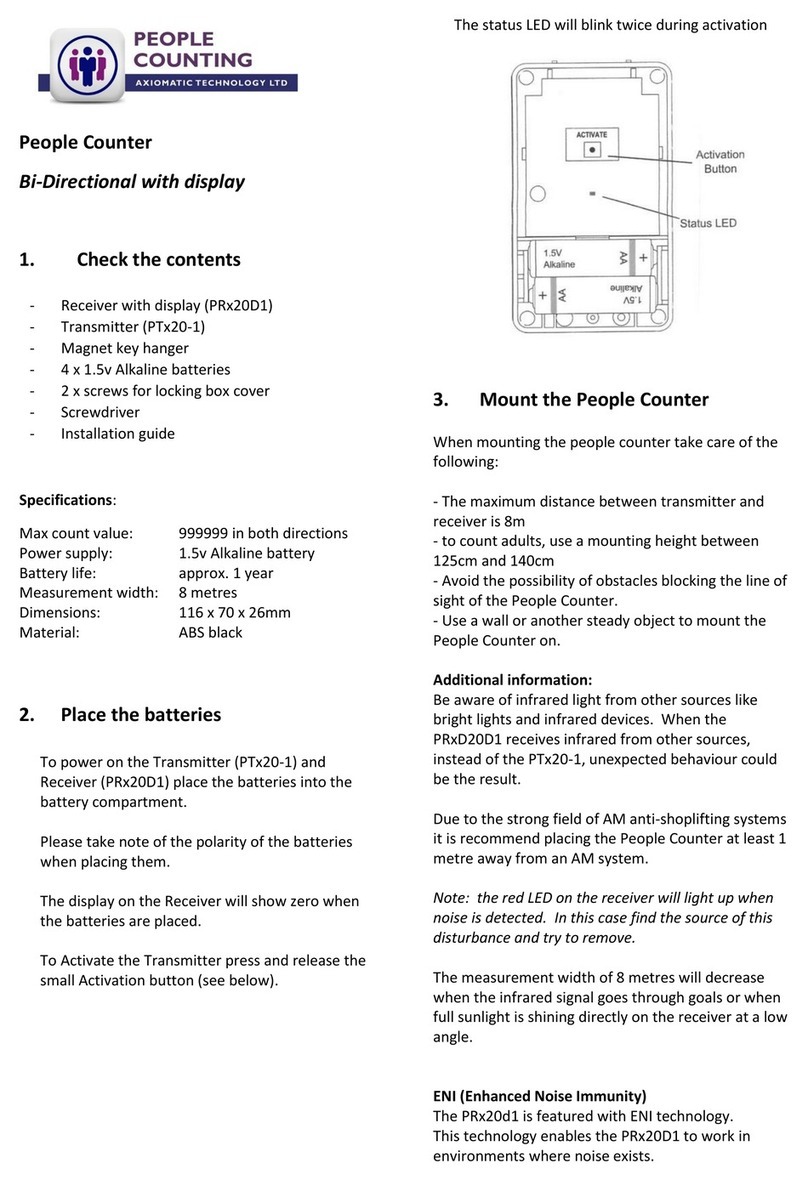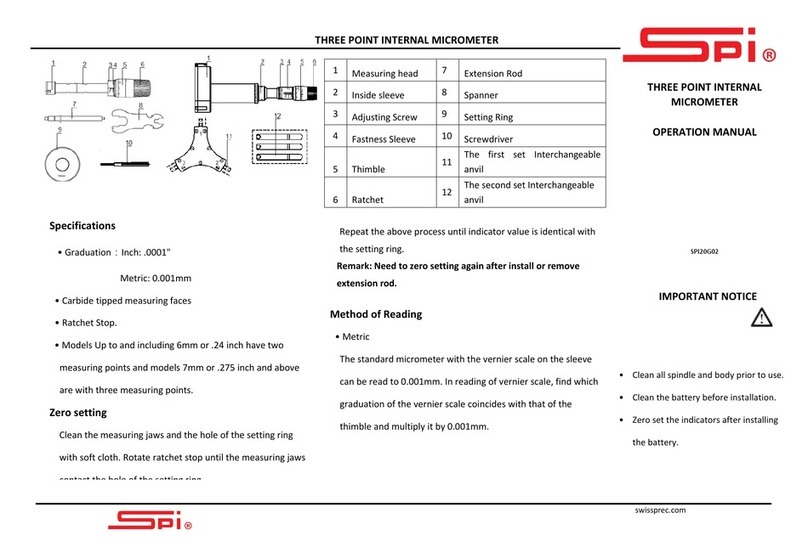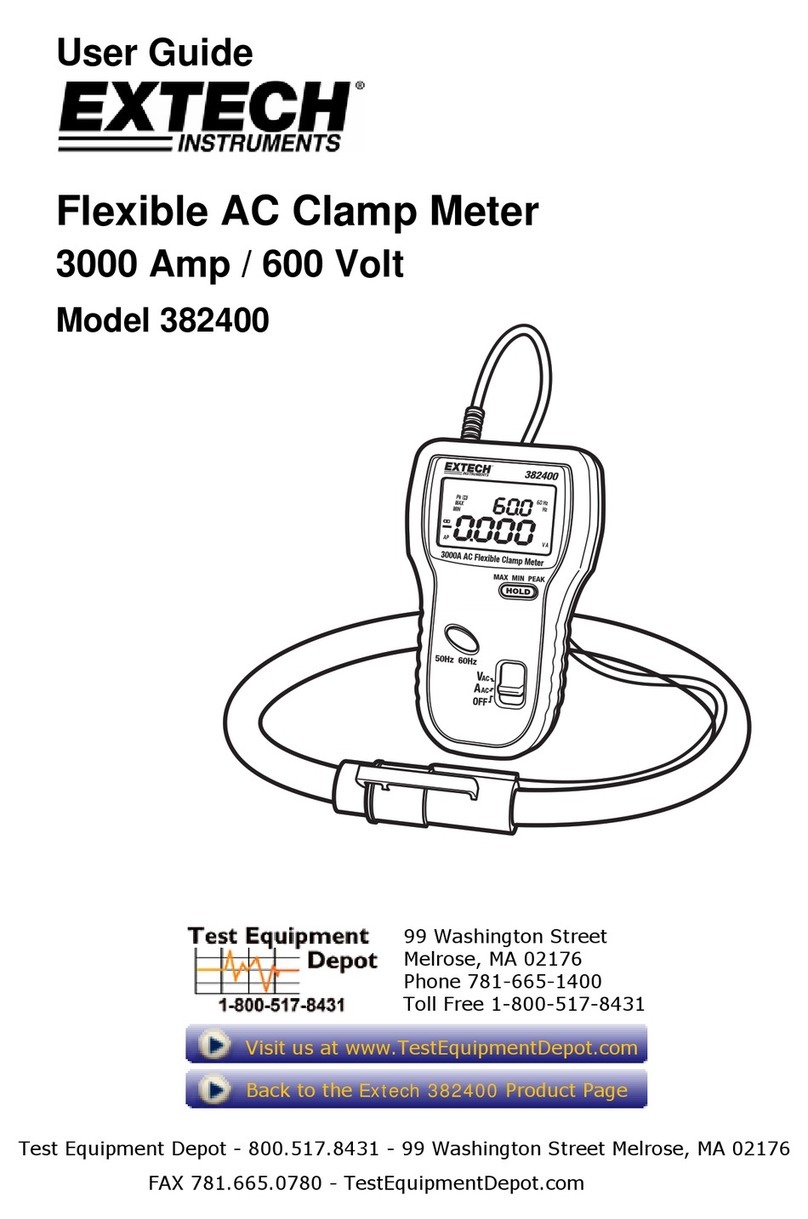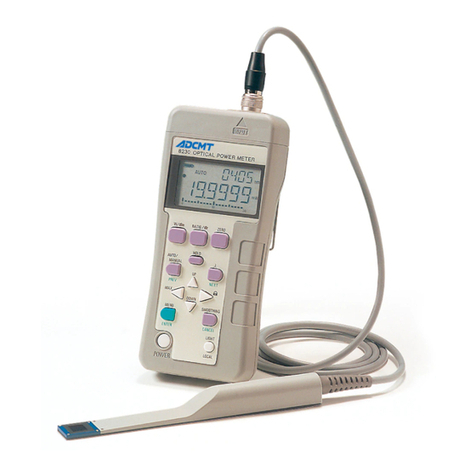Geosense MEMS DPI I User manual

MEMS Digital Portable
Horizontal Inclinometer
I
N
S
T
R
U
C
T
I
O
N
M
A
N
U
A
L

V1.1 MEMS Digital Portable Horizontal Inclinometer
09/02/2022
1
TABLE OF CONTENTS
................................................................................................................................................................0
1. VERSION CONTROL ......................................................................................................................3
2. INTRODUCTION .............................................................................................................................3
2.1. GENERAL DESCRIPTION .........................................................................................................................4
2.2. THEORY OF OPERATION.........................................................................................................................5
2.3. THE MEASUREMENT OF INCLINATION.....................................................................................................7
3. CONFORMITY.................................................................................................................................8
4. MARKINGS ...................................................................................................................................10
5. DELIVERY .....................................................................................................................................11
5.1. PACKAGING...........................................................................................................................................11
5.2. HANDLING .............................................................................................................................................11
5.3. INSPECTION / FUNCTIONALITY CHECK READINGS ...............................................................................11
5.4. STORAGE ..............................................................................................................................................12
6. INCLINOMTER CASING INSTALLATION THEORY ...................................................................12
6.1. BASELINE ..............................................................................................................................................12
6.2. DESIGN OF INCLINOMETER CASING .....................................................................................................12
6.3. ZONE OF INFLUENCE ............................................................................................................................13
6.4. OPERATIONAL MODES..........................................................................................................................14
i. Installation where both ends are accessible .................................................................................. 14
ii. Installation where single end is accessible .................................................................................... 14
7. OPERATION..................................................................................................................................16
7.1. SYSTEM COMPONENTS ........................................................................................................................16
7.2. SYSTEM COMPONENT DESCRIPTIONS .................................................................................................17
7.3. BATTERY CHARGING ............................................................................................................................19
7.4. INSTALLING THE INCLINOMETER APPLICATION ON THE ASD...............................................................21
8. SYSTEM ASSEMBLY AND OPERATION....................................................................................22
8.1. ASSEMBLING THE SYSTEM ...................................................................................................................22
9. USING INCLOPRO SOFTWARE APPLICATION (ANDROID) ....................................................37
9.1. RECORDING A SURVEY.........................................................................................................................37
9.2. VIEWING DATA......................................................................................................................................46
9.3. INITIAL / BASE SURVEYS.......................................................................................................................48
9.4. UPLOAD SELECTED SURVEY TO FTP ..................................................................................................50
9.5. EMAIL/SAVE TO PHONE/BLUETOOTH...................................................................................................50
10. DATA HANDLING .....................................................................................................................51
10.1. DATA FORMAT ..................................................................................................................................51
10.2. DATA REDUCTION.............................................................................................................................54
10.3. TEMPERATURE CONSIDERATIONS....................................................................................................57
11. MAINTENANCE.........................................................................................................................58
11.1. LUBRICATION AND CLEANING ...........................................................................................................58
11.2. STORAGE ..........................................................................................................................................59
11.3. CALIBRATION ....................................................................................................................................59
12. TROUBLESHOOTING...............................................................................................................59
12.1. PROBE ..............................................................................................................................................59

V1.1 MEMS Digital Portable Horizontal Inclinometer
09/02/2022
2
12.2. ASD READOUT .................................................................................................................................61
12.3. REEL AND CABLE..............................................................................................................................62
SPECIFICATIONS ...............................................................................................................................63
13. SPARE PARTS..........................................................................................................................65
14. RETURN OF GOODS ................................................................................................................66
14.1. RETURNS PROCEDURE ....................................................................................................................66
iii. Chargeable Service or Repairs.................................................................................................... 66
iv. Warranty Claim............................................................................................................................... 66
14.2. PACKAGING AND CARRIAGE .............................................................................................................67
14.3. TRANSPORT & STORAGE..................................................................................................................67
15. LIMITED WARRANTY ...............................................................................................................67

V1.1 MEMS Digital Portable Horizontal Inclinometer
09/02/2022
3
1. VERSION CONTROL
Version
Date
Author
Approved
Released
V1.0
V1.1
Feb 2022
TB
TC
GC
2. INTRODUCTION
This manual is intended for all users of the Horizontal Portable Inclinometer Systems
manufactured by Geosense® and provides information on their operating principles,
conventions, operation and maintenance.
It is VITAL that all personnel responsible
for the use of the Portable Inclinometer
READ and UNDERSTAND
this manual, prior to working with the equipment

V1.1 MEMS Digital Portable Horizontal Inclinometer
09/02/2022
4
2.1. General Description
The Geosense® Portable Inclinometer equipment is an environmentally sealed
assembly that is used to accurately and reliably register changes of inclination within
specialist inclinometer casing. The assembly comprises a probe connected to a
graduated cable that is held on a cable reel. The reel is Bluetooth enabled for
wireless connection to an Android Smart Device (ASD).
Inclinometer Casing can be installed or included in many types of structures and
monitoring regimes. It can be within vertical, inclined or horizontal installations.
This manual is focused on the horizontal Inclinometer System
Common applications include the following:
Embankment stability monitoring
Settlement/heave profile monitoring
Dam monitoring
Particular features of all Geosense® Portable Inclinometer Systems are:
Reliable long-term performance
Ruggedness; suitable for demanding environments
Bluetooth, cable free interconnection
High accuracy
Digital output and full EMI shielding
Designed with the user in mind
The Geosense® Inclinometer sensors are based upon Micro Electro Mechanical
Systems technology (MEMS). The MEMS accelerometer sensors in the Inclinometer
Probe are configured to measure changes in rotation (tilt or inclination). The probe
contains two sensors mounted orthogonally to measure inclination in the ‘A’ axis
direction (in line with the wheels) and rotation in the perpendicular, ‘B’ axis, direction.
Electronic circuitry within the probe interrogates its sensor and the corresponding
output is converted from an Analogue to a Digital signal, making it particularly
suitable for the demanding environments of geotechnical and civil engineering
applications.
Geosense® Inclinometer probes carry ‘onboard’ calibration data so that probe /
cable / reel / readout combinations are all interchangeable. Each element also has a
unique serial number.
Portable inclinometer systems are commonly used where monitoring is to be
infrequent or automated monitoring is too expensive. These systems are used to
determine the change in inclination of the inclinometer casing at intervals along its
length (commonly 0.5m or 2ft). This information is processed to generate a profile of
the inclinometer casing, with respect to horizontal and subsequent profiles being

V1.1 MEMS Digital Portable Horizontal Inclinometer
09/02/2022
5
compared with each other to detect changes.
2.2. Theory of Operation
Special tubes, commonly referred to as Casing or Access Tubes, are installed into or
fixed onto the structure or formation to be monitored. (see Geosense® Inclinometer
Casing Installation Manual).
Inclinometer casing is a specially machined ABS tube that has 4 equally spaced,
parallel ‘keyways’ in its inner surface and a reference ‘rib’ on its outer surface. The
inclinometer casing is designed to move with the structure/formation into which, or
onto which it is fixed, if the structure changes.
The Portable Inclinometer System is used to detect and quantify any changes in the
‘shape’ of the installed casing. For horizontal casing, changes in the vertical
direction can be detected. The inclinometer probe, connected to its cable, is inserted
into the inclinometer casing with its wheels located in the A+ / A- keyways (Figure 1:
Schematic of inclinometer casing keyways).
Casing for the Horizontal Inclinometer MUST
be installed so that one pair of keyways is VERTICAL
B+
B-
A+
A-
Figure 1: Schematic of inclinometer casing keyways

V1.1 MEMS Digital Portable Horizontal Inclinometer
09/02/2022
6
The Geosense® Digital Horizontal Inclinometer Probe houses a pair of extremely
sensitive Micro Electro-Mechanical System (MEMS) Tilt Sensors. In the Horizontal
probe, the ‘A’ axis is mounted with its ‘Null’ or ‘Zero’ output at 0o degrees from
horizontal. The two sensors are mounted orthogonally so that they can measure the
orientation of the probe along its length and the ’Roll’ of the probe about its axis,
simultaneously. The former is the primary measurement and referred to as the ‘A’
axis. The other axis is included for installation integrity purposes only and does not
form part of the data calculations. It is referred to as the ‘B’ axis (see sketch).
The probe is attached to a highly robust and flexible support / signal cable that is, in
turn, connected to a portable cable reel. The cable reel includes a Bluetooth
communication module and a re-chargeable battery power supply. The cable is
fitted with ‘crimped’ cable markers that securely identify 0.5 metre (or 2ft) intervals
along its length.
The Cable Reel Bluetooth module is used to connect to an Android Smart Device
(ASD) or Ruggedized Android Mobile Phone to the probe. The specially
dedicated horizontal Inclinometer software on the ASD first connects to the reel
modules and then to the probe at the end of the cable. Once connected the ASD
displays the inclination of the probe in mm.
The displayed values represent the value of ‘L Sin θ’ (Figure 2: L Sin θ and roll
planes of measurement) in the ‘A’ direction and Degrees of ‘Roll’ in the ‘B’ direction.
Figure 2: L Sin θ and roll planes of measurement

V1.1 MEMS Digital Portable Horizontal Inclinometer
09/02/2022
7
2.3. The Measurement of Inclination
To generate a profile of an installed inclinometer casing, a series of interconnected
readings are recorded. The probe is orientated so that the fixed wheel is facing
downwards and inserted into the casing with the sprung upper wheels in the
corresponding upper groove. It is lowered to the far end of the casing and
suspended on one of the metallic cable markings.
At the far end of the casing, with the probe suspended (not resting on the bottom), a
reading is recorded. The probe is then lifted up by the distance equivalent to its
‘gauge length’ (see sketch) and another reading is taken. This process is repeated
up the full length of the casing.
To minimise the issue of ‘Human Error’, Geosense® has introduced the option of
‘Automatic Inclinometer Data Acquisition’ into its proprietary software. This utilises
the stability and accuracy of the sensors together with the intelligence of the ASD to
allow the software to determine when the readings are considered stable, record
them, instruct the user to move to the next reading elevation and sense when this
has been carried out.
Essentially, the user has only to respond to a series of audible prompts, thereby
almost removing the risk of errors caused by distraction, haste or miss-recording.
The uppermost wheel, denoted by the ‘A+’ on the probe, is the direction uppermost
wheel.
A ‘+’ change in the computed Displacement indicates a change in the inclination in
the ‘+’ direction.
In almost all cases, inclinometer surveys are conducted to record a profile from the
base of the inclinometer tube towards the top, even if the movements are to be
computed differently (from the ‘Top Down’). Commonly, monitoring assumes the
base of the tube is ‘beyond the zone of expected movements’, so movement data is
computed accordingly. There are some circumstances where this assumption does
not apply so movements are computed from the top downwards where the
movement of the top of the tube can be determined by other measuring systems.
Inclinometer surveys are almost NEVER conducted from the top towards the base.
Three surveys are normally conducted to establish the Base Data File (Initial Data).
The values are either averaged to generate the Base Data or a ‘Mean Data Set’ is
selected to represent the Base Data.

V1.1 MEMS Digital Portable Horizontal Inclinometer
09/02/2022
8
3. CONFORMITY
Geosense Ltd
Nova House
Rougham Industrial Estate
Rougham, Bury St Edmunds
IP30 9ND
Email: [email protected]o.uk
Web: www.geosense.co.uk.
Declaration of Conformity
We Geosense® Ltd at above address declare under our sole responsibility that the Geosense®
products detailed below to which this declaration relates complies with protection requirements of the
following harmonized EU Directives:
•Low Voltage Directive 2014/35
•Electromagnetic Compatibility Directive 2014/30/EU
•Radio Equipment Directive 2014/53/EU
•Restriction on the use of certain Hazardous Substances (RoHS2) 2017/2102/EU
Equipment description MEMS Digital Portable Inclined Inclinometer
Make/Brand Geosense
Model Numbers DPI I
Compliance has been assessed with reference to the following harmonised standard:
EN 61326-1:2013 Electrical equipment for measurement, control and laboratory use.
EMC requirements. General requirements.
EN 61010 (2010) Safety requirements for electrical equipment for measurement, control, and
laboratory use. General requirements.
A technical file for this equipment is retained at the above address.
Martin Clegg
Director
Martin Clegg
Director
15th September 2021

V1.1 MEMS Digital Portable Horizontal Inclinometer
09/02/2022
9
Geosense Ltd
Nova House
Rougham Industrial Estate
Rougham, Bury St Edmunds
IP30 9ND
Email: [email protected]o.uk
Web: www.geosense.co.uk.
Declaration of Conformity
We Geosense® Ltd at above address declare under our sole responsibility that the Geosense®
products detailed below to which this declaration relates complies with protection requirements of the
following harmonized EU Directives:
We Geosense Ltd at above address declare that the equipment detailed below is in conformity with
the following UK Regulations and their corresponding Statutory Instruments:
•Electrical Equipment (Safety) Regulations 2016
•Electromagnetic Compatibility Regulations 2016
•Radio Equipment Regulations 2017
•Restriction on the use of certain Hazardous Substances in Electrical & Electronic Equipment
Regulations 2012
Equipment description MEMS Digital Portable Inclined Inclinometer
Make/Brand Geosense
Model Numbers DPI-I
Compliance has been assessed with reference to the following harmonised standard:
EN 61326-1:2013 Electrical equipment for measurement, control and laboratory use.
EMC requirements. General requirements.
EN 61010 (2010) Safety requirements for electrical equipment for measurement, control, and
laboratory use. General requirements.
A technical file for this equipment is retained at the above address.
Martin Clegg
Director
15th September 2021

V1.1 MEMS Digital Portable Horizontal Inclinometer
09/02/2022
10
4. MARKINGS
All Geosense® Digital MEMS Inclinometer systems are labelled with the following
information and each component carries a unique identification serial number that is
included on the labels.
•Product group: MEMS Inclinometer system
•Product type: MEMS Inclinometer system
•Model: Horizontal
•Serial numbers: Probe: DPI H XXXX / Cable Reel: DRI XXXX
•CE and/or UKCA mark
•FCC mark
•WEEE mark
Figure 3: Geosense Inclinometer Probe Markings

V1.1 MEMS Digital Portable Horizontal Inclinometer
09/02/2022
11
5. DELIVERY
This section should be read by all users of equipment manufactured by Geosense®.
5.1. Packaging
Geosense® Inclinometers are packed for transportation to site. Packaging is
suitably robust to allow normal handling by transportation companies. Inappropriate
handling techniques may cause damage to the packaging and the enclosed
equipment. The packaging should be carefully inspected upon delivery and any
damage MUST be reported to both the transportation company and Geosense®.
5.2. Handling
Whilst they are a robust devices, Geosense® Inclinometer systems are precision
measuring instruments. They, and their associated equipment, should always be
handled with care during transportation, storage and installation.
Once the shipment has been inspected (see 5.3), it is recommended that equipment
remains in its original packaging for storage or onward transportation.
5.3. Inspection / Functionality Check Readings
It is important to check all the equipment in the shipment as soon as possible after
taking delivery and well before installation is to be carried out. Check that all the
components detailed on the documents are included in the shipment. Check that the
equipment has not been physically damaged.
Geosense® Inclinometer probes are supplied with individual calibration sheets that
include their serial numbers and these are shipped with the equipment.
Wherever possible, it is suggested that the Inclinometer systems should be
functionally checked soon after arrival to ensure they have not been damaged during
transportation. This is a basic ‘out of the box’ functional check. To carry out the
check, follow the initial steps detailed in section 7 of this manual.

V1.1 MEMS Digital Portable Horizontal Inclinometer
09/02/2022
12
5.4. Storage
All equipment should be stored in an environment that is protected from direct
sunlight. It is recommended that equipment be stored in a dry environment with
caps in place.
Batteries should be charged regularly, even when the equipment is not in use, to
maintain their capacity and life expectancy. If the probe is to be stored for long
periods, a light coat of light lubricant on the moving parts is advisable.
Whilst in storage, it is vital that storage areas should be free from rodents as they
have been known to damage cables and cases.
No other special requirements are needed for medium or long-term storage although
temperature limits should be considered when storing any such instruments and
readout equipment.
6. INCLINOMTER CASING INSTALLATION THEORY
6.1. Baseline
Prior to any survey taking place, the appropriate Geosense® Inclinometer Casing
will need to have been installed on site. The Geosense® Horizontal Inclinometer
system can be used to measure the profile of the casing in relation to a presumed
fixed point.
If the system is being used to measure construction related movements in the heave
or settlement process, it is good practice to set a baseline period before any
monitoring for subsequent changes is undertaken. The baseline period may consist
of different time periods based on site conditions.
Geosense® recommends that any site works have a suitable baseline period active
before monitoring of settlement/heave using a horizontal system is used. This allows
for seasonal and diurnal changes not related to the ongoing construction works to be
understood and these can then be isolated from other movements in future review of
the data.
A baseline period may not be relevant if the movement to be monitored is ongoing
and not related to a specific activity on site that can be modally influenced.
6.2. Design of Inclinometer Casing
Depending on the type and cause/source of any expected movement, it may be
necessary to tailor installations to individual project needs. The below scenarios
represent two such types of installation that may be used. Variations of these
installations may also be used dependent on unique site situations.

V1.1 MEMS Digital Portable Horizontal Inclinometer
09/02/2022
13
6.3. Zone of Influence
The Geosense® Horizontal Inclinometer measures absolute angle, however the
system as a whole is relative when referring to a measurement of displacement over
a profile. This means that movement (displacement as a result of heave or
settlement) in the vertical plane must be measured in relation to a fixed end of the
system.
One end of a Horizontal Inclinometer installation MUST
always be outside of the Zone of Influence for the
expected heave or settlement event
Without a fixed end, it would not be known in which way either end of the profile had
moved, as a heave at one end could also be construed as a settlement at the
opposite end.
The end that is presumed with a high confidence to be outside of any zone of
influence of settlement or heave is used as the “fixed” point. This can be either end
of the installation, though it is recommended that this is the “Access End” as further
precise level surveys can be conducted to confirm the stability of the reference end.

V1.1 MEMS Digital Portable Horizontal Inclinometer
09/02/2022
14
6.4. Operational Modes
The Geosense® Portable Horizontal Inclinometer is designed to be used on
installations where either both ends, or only one end of the inclinometer casing is
accessible.
i. Installation where both ends are accessible
Figure 4: Inclinometer casing installation where both ends are accessible. A rope is run from one end
to the other to allow a second person to pull from the opposite end
ii. Installation where single end is accessible
Figure 5: Inclinometer casing installation where only one end is accessible. A dead-end pulley is fitted
along with a further access tube to allow for the probe to be pulled to the far end using a rope
Far End
Access End
Surcharge / Fill / Embankment
Zone of Influence
Fixed end
outside of ZoI
Pull Rope
Rope
Casing
Inclinometer
Casing
Dead-end
Pulley
Surcharge / Fill / Embankment
Fixed end
outside of ZoI
Zone of Influence
Pull Rope
Access End
Far End
Inclinometer
Casing

V1.1 MEMS Digital Portable Horizontal Inclinometer
09/02/2022
15
Where one end is not accessible, Geosense® are able to supply a dead-end pully
which allows for the rope to be looped back and to the operator.
Figure 6: Dead-end pulley (pipe fittings may vary dependent on casing used)
Figure 7: Dead-end pulley internal loop (for illustration
of mechanism only, model may vary)

V1.1 MEMS Digital Portable Horizontal Inclinometer
09/02/2022
16
7. OPERATION
This section of the manual is intended for all users of portable Geosense®
inclinometer equipment and is intended to provide guidance with respect to its use.
It must be remembered that no two installations will be the same and it is inevitable
that some ‘fine tuning’ of the following procedures will be required to suit specific site
conditions.
7.1. System Components
The Geosense® Horizontal Portable Inclinometer consists of two carry cases. One
for the reel, and one for the sensor probe and ancillary equipment (Figure 8:
Inclinometer Carry Cases) (Figure 9: Inclinometer Probe Carry Case)
Figure 9: Inclinometer Probe Carry Case
Figure 8: Inclinometer Carry Cases

V1.1 MEMS Digital Portable Horizontal Inclinometer
09/02/2022
17
Illustrated below (Figure 10: Inclinometer Components) are the components of the
Geosense® Inclinometer and Readout System
A. INCLINOMETER PROBE
B. CABLE
C. CABLE REEL with CHARGER
D. ASD (ANDROID SMART DEVICE) with CHARGER and STYLUS
E. CABLE SUPPORTS
F. CAPS
7.2. System Component Descriptions
1) HORIZONTAL INCLINOMETER PROBE
The special probe in which the sensors and electronics are housed. Two
pairs of wheelsets provide stability and maintain alignment. Each wheelset
consists of one wheel which is fixed, and the other is sprung, to provide a tight
fit within the casing grooves. Waterproof connector for attaching the cable.
2) CABLE
A rugged and flexible cable for electrical connection to the probe. Fitted with
secure cable markers at 0.5 meter (or 2 ft) centres to accurately position the
probe inside the inclinometer casing at defined and repeatable locations.
Figure 10: Inclinometer Components
Power Button
Handle to
rotate reel
Length
marker
A
B
D
C
E
F

V1.1 MEMS Digital Portable Horizontal Inclinometer
09/02/2022
18
3) CABLE REEL with CHARGER
A convenient carrying facility for the graduated cable. Included in the reel
body is the main inclinometer probe power supply and the Bluetooth
communication module. The battery is charged by connecting the supplied
charger to the charging socket on the face of the reel. Clips are fitted to the
reel for convenient probe transportation.
4) ASD with CHARGER and STYLUS
A ruggedized, GSM enabled, Android device for reading, recording, displaying
and transmitting the data from the inclinometer probe. Its internal battery is
charged using the supplied micro USB charger / power supply.
5) CABLE SUPPORTS
For fitting into the top of all Geosense® Inclinometer casing (and the casing
from most other manufactures), these are used to position the probe at a
repeatable location within the casing.
6) CAPS
Protection for the electrical connections to be used when the probe is not
connected to the reel.
7) CARRYING CASES
Anodised aluminium hard case for the inclinometer probe, readout and
accessories. Hard wearing fabric case with shoulder strap for the cable reel
and its charger.
8) SOFTWARE
The Geosense IncloPRO ASD application allows for data collection and basic
review upon completion of a successful survey. Datasets can be graphically
compared in the field and data can be stored either directly on the device or
sent to the desired location. Further visualisation, interpretation and reporting
software is recommended for post-processing of the data and is available
upon request.

V1.1 MEMS Digital Portable Horizontal Inclinometer
09/02/2022
19
7.3. Battery Charging
Whilst the Reel and ASD have long battery lives, fully charging the equipment prior
to visiting site is strongly recommended.
As with most handheld equipment, the ASD can be easily charged using most USB
chargers and power banks. However, the reel requires a mains 100 - 250 VAC
supply.
1) Remove the ASD, USB cable and charger from the hard case. Connect to the
Micro USB connector to the ASD and the Standard USB plug to the charger.
2) The charger is supplied with various mains plug adaptors. Select and fit the
adaptor appropriate to the available mains electrical sockets.
3) Connect the charger to a mains electrical supply, switch it on and allow the
ASD to charge fully.
4) Remove the cable reel from its soft case and also remove the reel charger
from the pocket in the front case flap. (Figure 11)
Figure 11: Charger location in front section of carry case
Table of contents
Other Geosense Measuring Instrument manuals
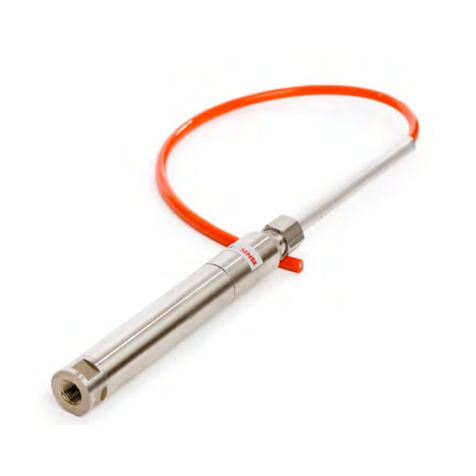
Geosense
Geosense VWPHT-3600 Series User manual
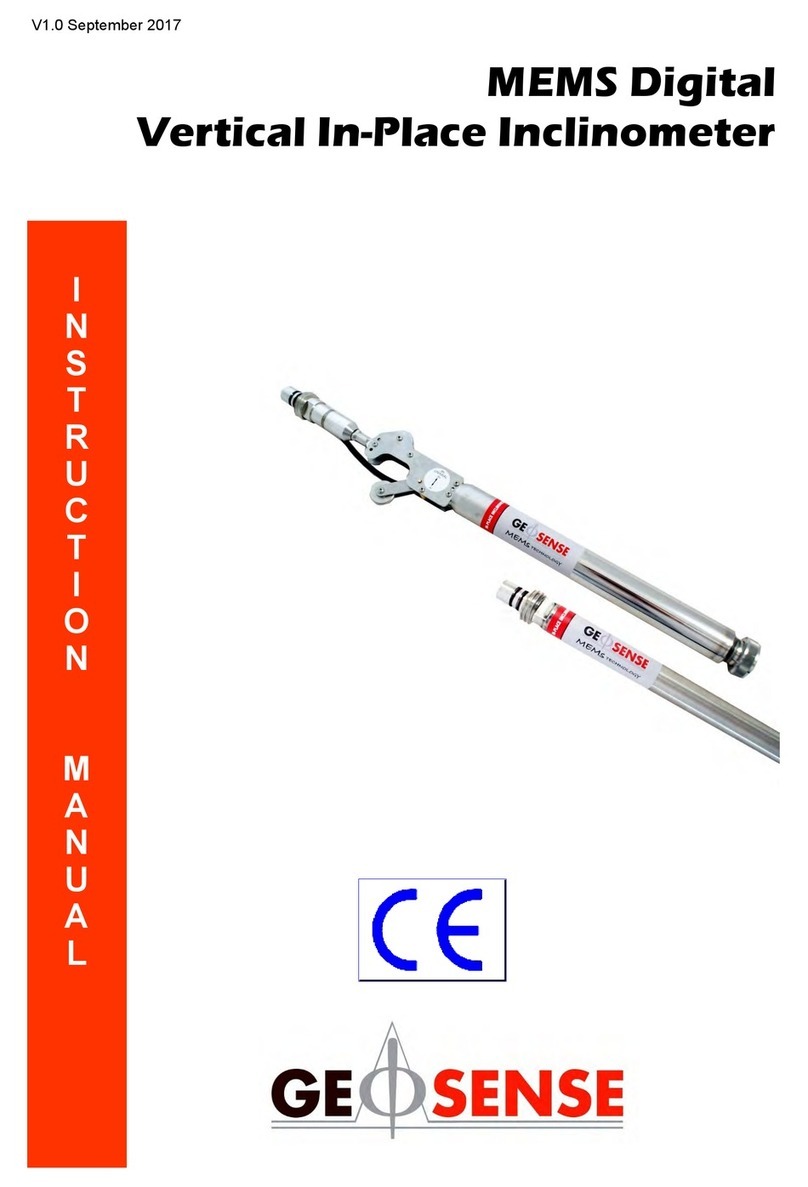
Geosense
Geosense IPI-V-1 User manual
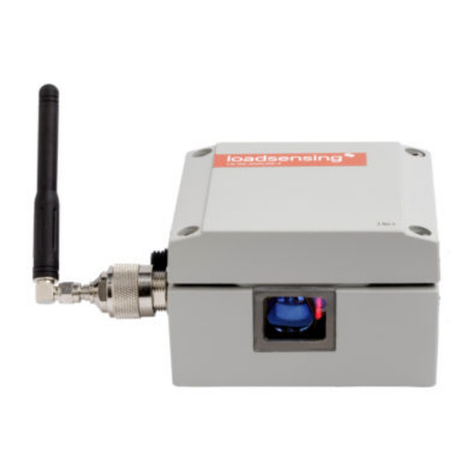
Geosense
Geosense WI-SOS 480 User manual
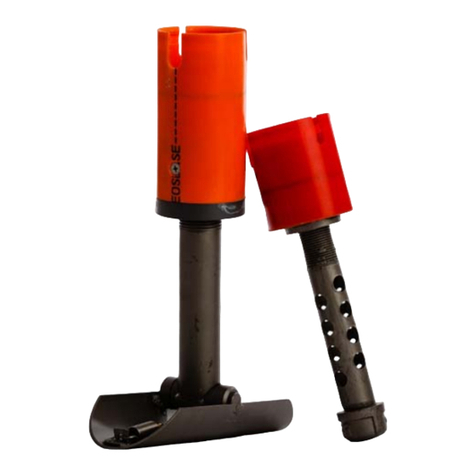
Geosense
Geosense Quick Joint User manual
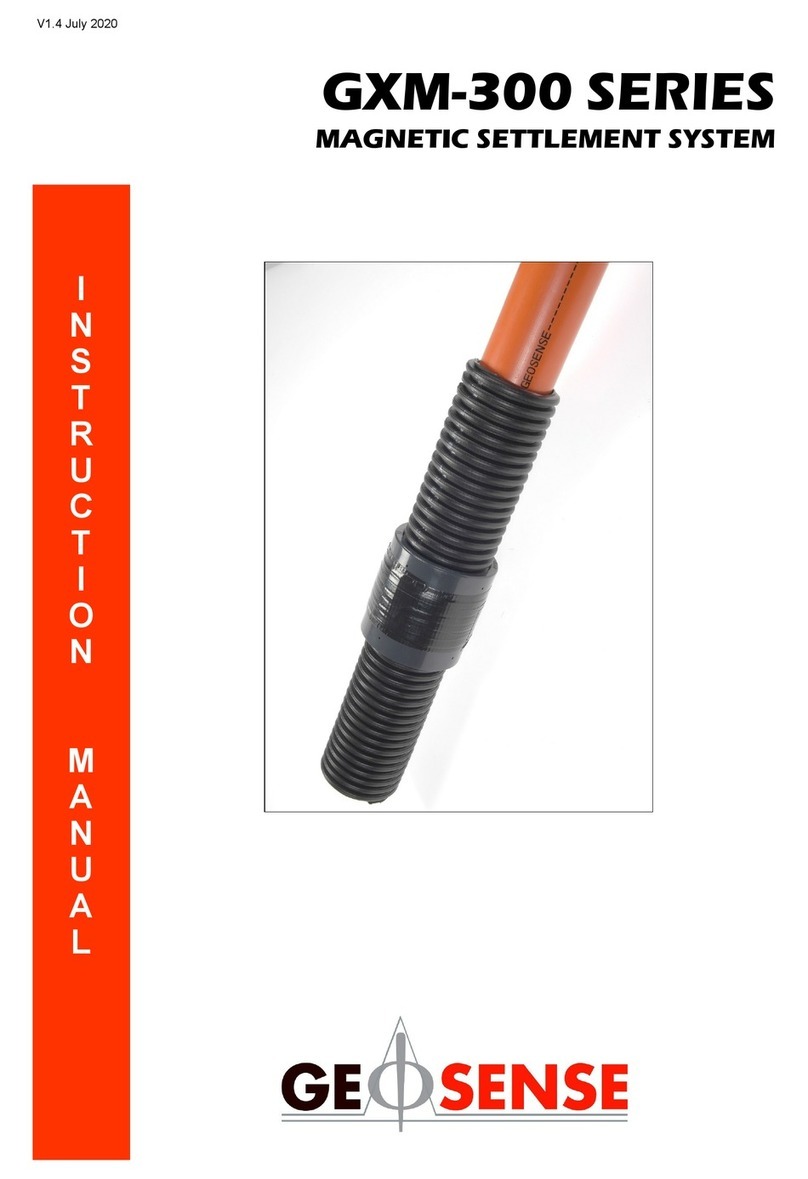
Geosense
Geosense GXM-300 Series User manual
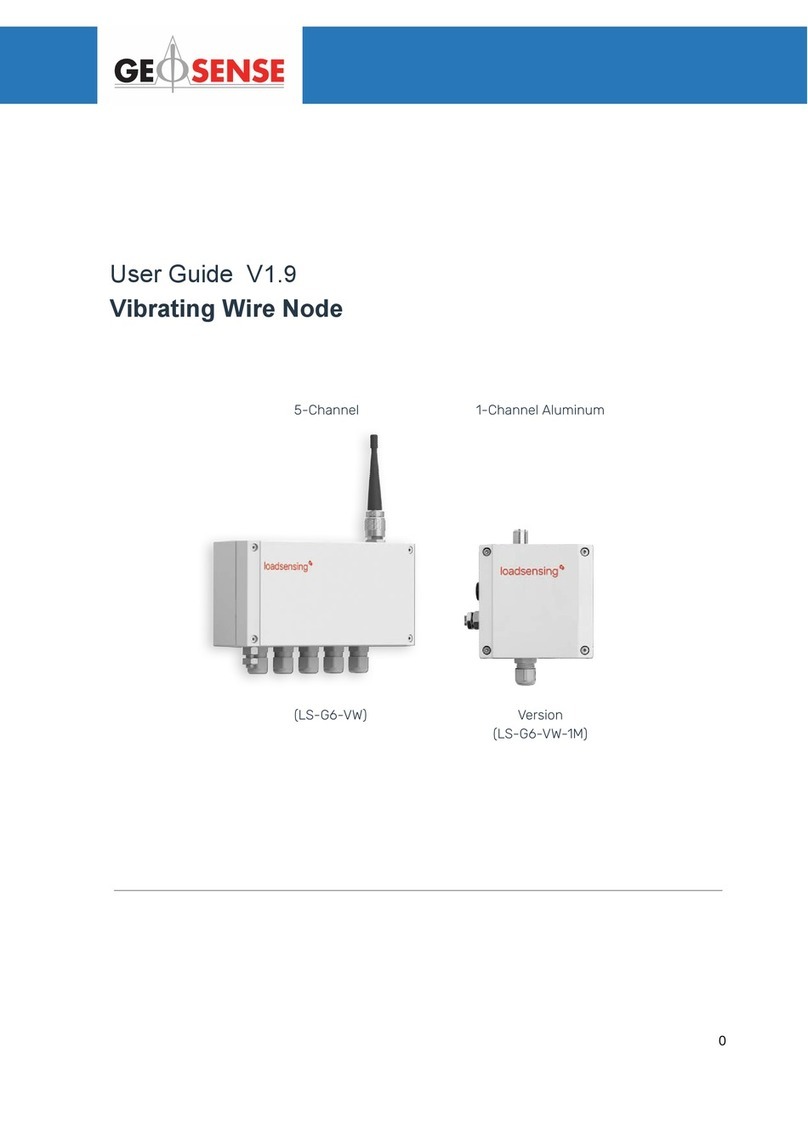
Geosense
Geosense LS-G6-VW User manual
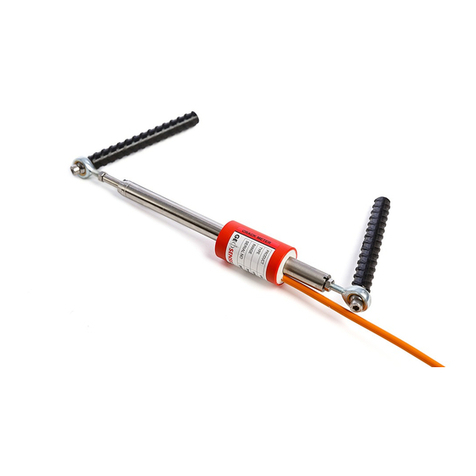
Geosense
Geosense VWCM-4000 User manual
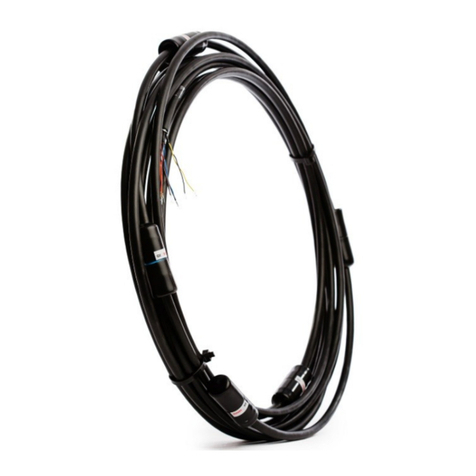
Geosense
Geosense TP-1 User manual
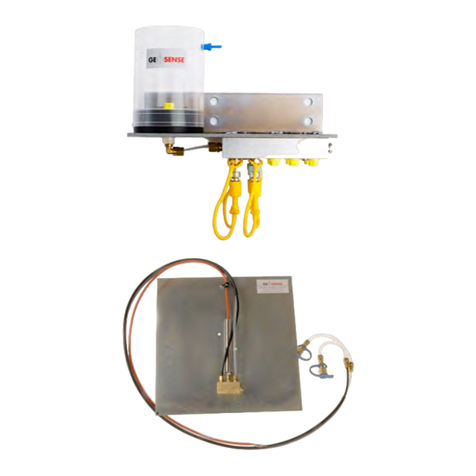
Geosense
Geosense VWLSS-200 User manual
